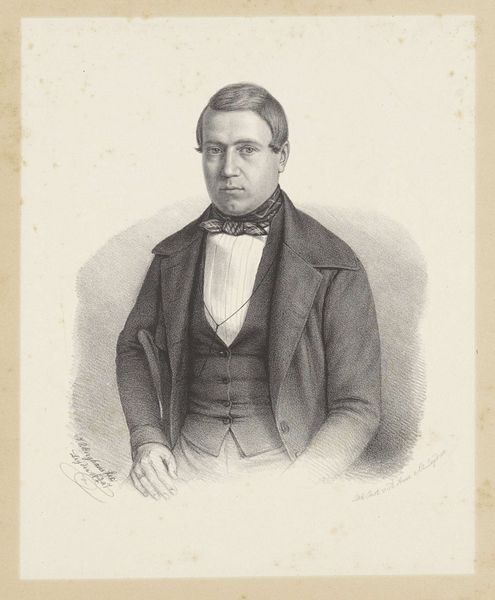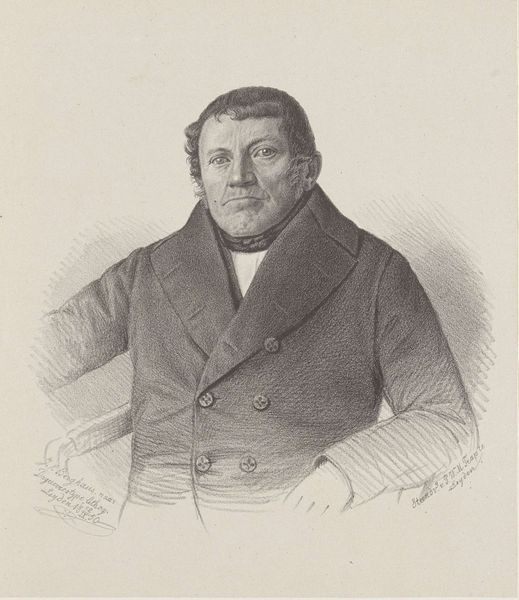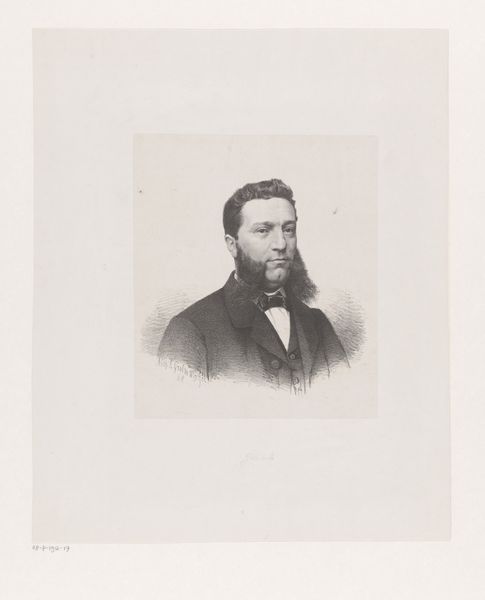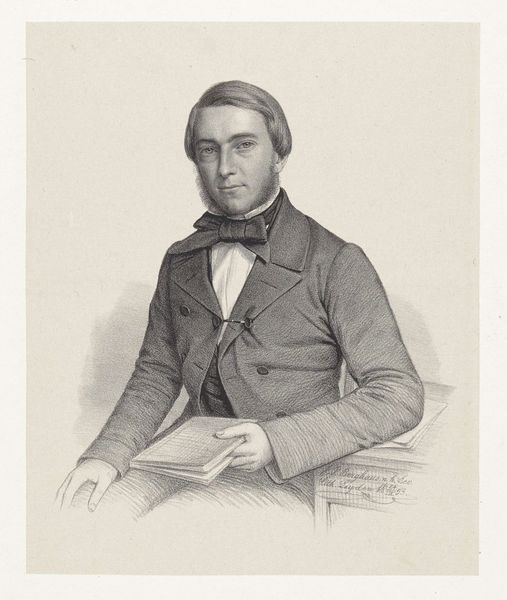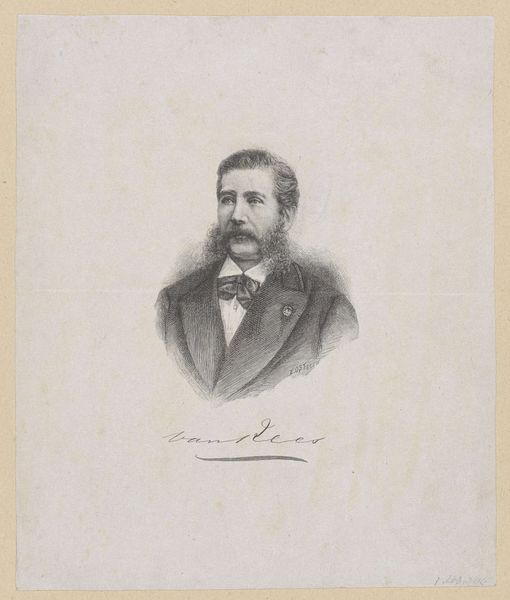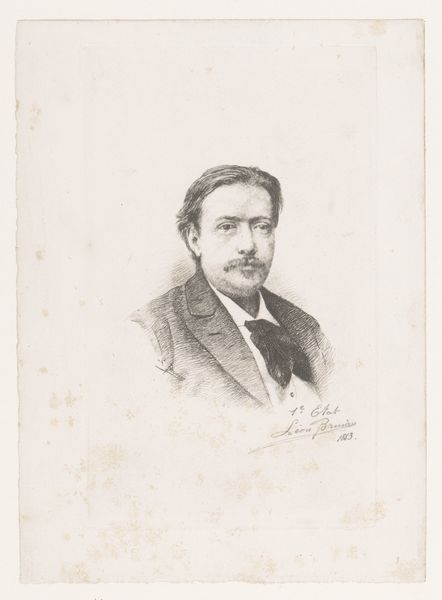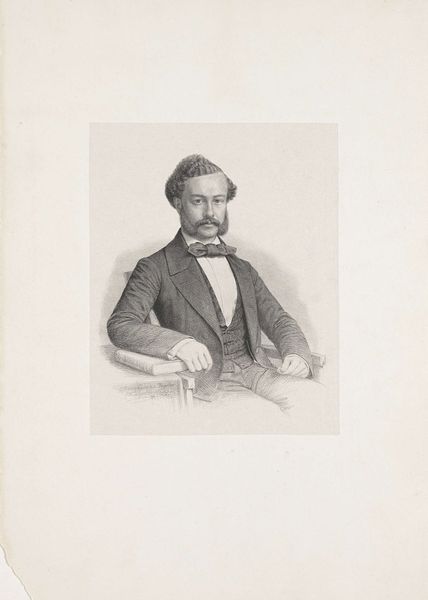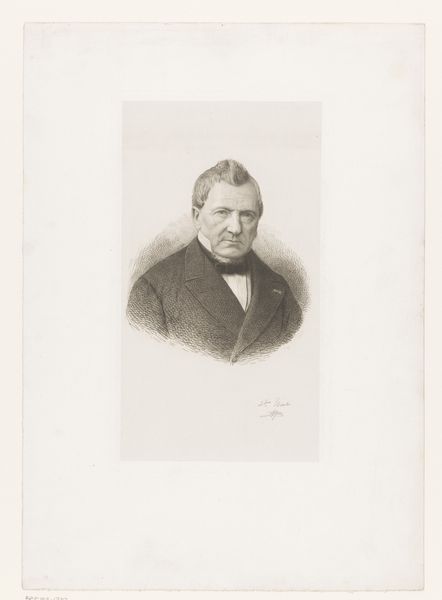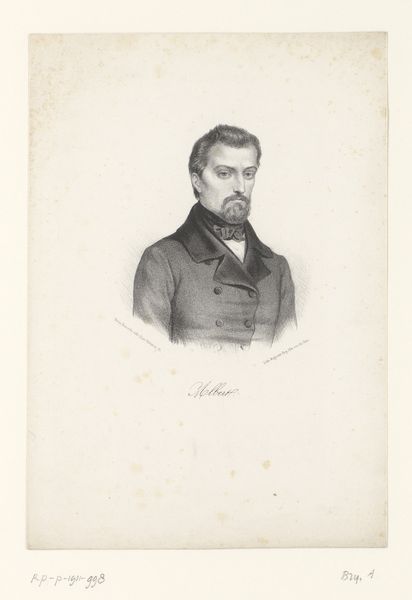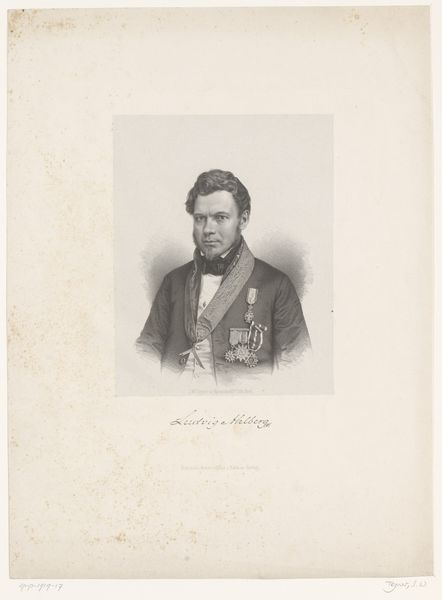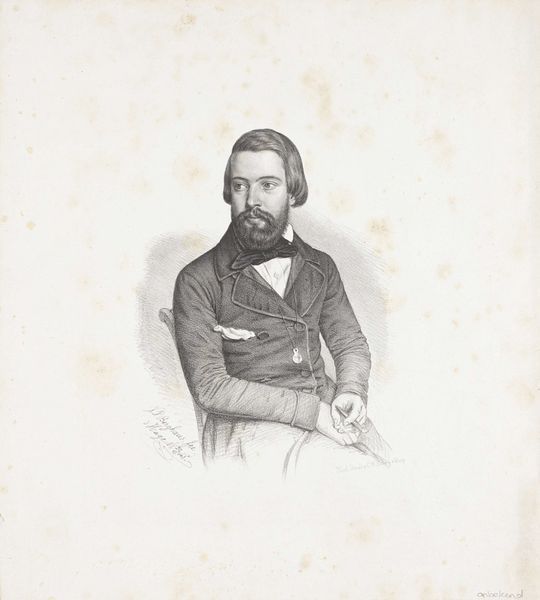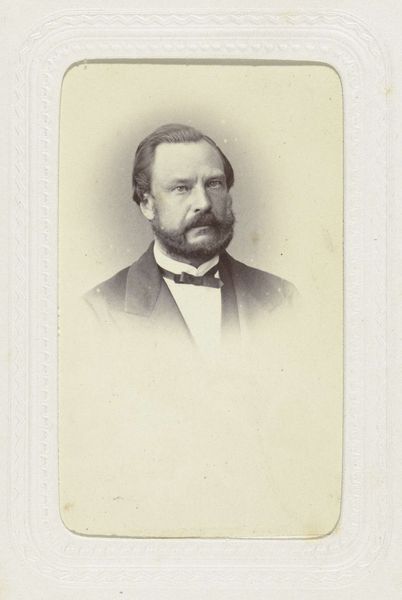
Portret van een onbekende man, mogelijk Francois Willem Ketjen Possibly 1858
0:00
0:00
Dimensions: height 210 mm, width 165 mm
Copyright: Rijks Museum: Open Domain
Editor: Here we have Johann Peter Berghaus’s pencil drawing, “Portret van een onbekende man, mogelijk Francois Willem Ketjen,” potentially from 1858. I’m struck by the detailed rendering of the sitter’s clothing compared to his face. What can we learn from focusing on the material aspects of this portrait? Curator: This pencil drawing is fascinating if we look beyond simply *who* is portrayed and consider *how* it was made. The mid-19th century witnessed industrial advancements affecting art production, including pencil manufacture. Notice the almost mechanical precision in rendering the sitter's jacket. Does this suggest an artist responding to or even competing with, mass-produced goods? Editor: So you're saying that the rise of industry had a direct influence on artistic choices, even in portraiture? That is such a great observation, thanks. The rendering looks almost photorealistic. Was photography maybe an influence? Curator: Precisely. Think about it: the sitter's social standing is signaled by his attire - a carefully crafted suit and ornate chair. Berghaus, through his expert handling of the graphite, emphasizes these material signifiers. Is the drawing merely documenting social hierarchy, or subtly commenting on the growing importance of material wealth in defining identity? Perhaps questioning photography’s claim on accurately capturing life. Editor: It's amazing how focusing on the material-- the pencil strokes, the depiction of fabric – opens up new ways of interpreting the portrait beyond just the sitter’s identity. Now, looking at it that way it also feels less timeless and more… like a captured moment. Curator: Indeed. By shifting our focus to production, labor, and consumption, we challenge the traditional boundaries of "high art," acknowledging that even portraiture can reflect broader socio-economic forces at play. Now it speaks volumes about the era it was created in! Editor: I never thought I’d be looking so closely at someone's suit in a portrait! It's made me think about all those decisions that come together during the making process to create not just art, but context. Curator: Exactly. It forces us to be mindful of the choices involved. The artwork becomes more than just art and captures historical information too.
Comments
No comments
Be the first to comment and join the conversation on the ultimate creative platform.
